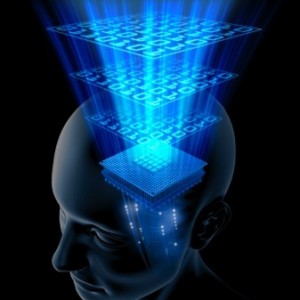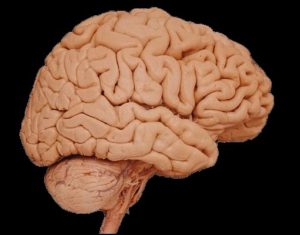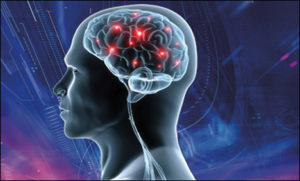 I’m reading a book. It’s a book written by a friend. I call him a friend even though I’ve not met him, nor, likely, will I ever meet him. That isn’t why I’m reading it though. I’m reading it because it covers a topic that is dear to me, a topic that has vexed me for many, many years: Death.
I’m reading a book. It’s a book written by a friend. I call him a friend even though I’ve not met him, nor, likely, will I ever meet him. That isn’t why I’m reading it though. I’m reading it because it covers a topic that is dear to me, a topic that has vexed me for many, many years: Death.
No, I’m not a brooding and morbid existentialist. Actually, now that I think about it, yes I am, but that’s neither here nor there. It isn’t the spectre of death that interests me. It isn’t some dark obsession with evil or gore or fear that has me vexed. It is, as I think my previous writings have demonstrated, the mind-body question that has my attention. It is the divide between the deterministic world view and the spiritualist world view. It’s an intellectual pursuit driven by a single question: what’s next?
I mentioned the book I’m reading, which is Greg Taylor’s Stop Worrying! There Probably is an Afterlife (Daily Grail Publishing 2013), because even though I really just started it, my friend has gotten me to thinking – not a terribly difficult thing to achieve, I’ll admit. The second chapter is dedicated to one particular aspect of the mind-body question, or more specifically the question of “what’s next?” It deals with the idea of death-bed visions.
If you are at all familiar with my writings on this subject, you’ll probably already know my take on these matters, but I will say that Greg’s thoughts on the subject have affected my view. It should be known that I intend to provide an in-depth review the book upon finishing it, what follows, however, is not a review, but rather is my take on one aspect of its contents.
 Death-bed visions are, much like near-death experiences, almost archetypal to the process of dying. At first glance they seem like an esoteric experience based in delusion, or hallucination, but upon further reading, one inevitably finds that not only are death-bed visions far more common than most anyone realises, but they are surprisingly similar among accounts. There are literally thousands of documented death-bed vision experiences, and, even by the most conservative estimates, millions of undocumented experiences. Depending on who you ask, these experiences seem nearly ubiquitous.
Death-bed visions are, much like near-death experiences, almost archetypal to the process of dying. At first glance they seem like an esoteric experience based in delusion, or hallucination, but upon further reading, one inevitably finds that not only are death-bed visions far more common than most anyone realises, but they are surprisingly similar among accounts. There are literally thousands of documented death-bed vision experiences, and, even by the most conservative estimates, millions of undocumented experiences. Depending on who you ask, these experiences seem nearly ubiquitous.
I will be dedicating an entire post (perhaps two) to the topic of death-bed visions, as it holds much potential to understand what happens to us when/as we die, for now though, I’d like to focus on an issue that, according to some, predicates all other issues on the topic of the mind-body question: Determinism.
Don’t run away just yet! I know, determinism is a dirty word. I know that the philosophy of life is one of the topics our betters have warned us not to discuss in polite company, amongst other subjects like politics and religion, but come on…take a risk with me.
Determinism says that acts of the will, occurrences in nature, or social or psychological phenomena are causally determined by preceding events or natural laws. Which means, in simpler terms, that there is a physical cause or origin, rooted in nature, for all aspects of reality.
Greg Taylor, a wiser man among many wise men, has asserted in his book that a deterministic world view is flawed. He says that it’s inadequate, and that experiences like death-bed visions are evidence that determinism is an infantile pet concept of aggressive atheists and modern philosophers of mind.
It’s true, many so-called angry atheists subscribe to the deterministic view of biology. P.Z. Meyers is quoted as saying:
“If many object to the idea that human identity emerges gradually during development, they’re most definitely going to find the idea of soullessness and mind as a by-product of nervous activity horrifying. This will be our coming challenge: to accommodate a view of ourselves and our place in the universe that isn’t encumbered by falsehoods and trivialising myths.”
Richard Dawkins has made similar statements, as have several other popular atheists in the limelight. Meyer’s words embody the argument, but don’t really counter it. He seems to dismiss, or conveniently omit one very important aspect, one that features prominently in Greg Taylor’s argument, and that is that consciousness appears to be pointedly non-deterministic.
 This position is valid. It’s demonstrated in the phenomena associated with the afterlife, though in the interest of intellectual honesty, that phenomena isn’t readily accepted by those who don’t subscribe to any kind of religious tradition. It is largely unquantifiable, which is precisely why it sits in opposition to determinism. That doesn’t mean it should be dismissed, it means only that it should be recognised as less valuable to the discussion than some would prefer. It doesn’t end there though.
This position is valid. It’s demonstrated in the phenomena associated with the afterlife, though in the interest of intellectual honesty, that phenomena isn’t readily accepted by those who don’t subscribe to any kind of religious tradition. It is largely unquantifiable, which is precisely why it sits in opposition to determinism. That doesn’t mean it should be dismissed, it means only that it should be recognised as less valuable to the discussion than some would prefer. It doesn’t end there though.
A non-deterministic view of consciousness is also supported through quantum physics. Some might suggest that this is no more measurable than afterlife phenomena, and to those unfamiliar with the complex ideas and theories held in quantum mechanics, that might be true, but concepts like entanglement, uncertainty, and even zero point fields are quite real and measurable.
But we needn’t go that far in our pursuit of ways to quantify consciousness.
I recently wrote about some (relatively) new and exciting brain scanning techniques emerging from the field of biomedicine in neuroscience. In an unrelated post, I discussed the possibility that geomagnetic energy might be affecting our brains and causing hallucinations of a sort; hallucinations that are in turn perceived as paranormal experiences. As a result of that post, and the commentary that followed, I came to realise that the evidence for determinism is now stronger than ever, and the reason is much simpler than quantum physics.
It’s true that there really is no disconnection between people. In fact, there is no real disconnection between anything that exists. All matter – and energy – are made of up fundamental particles. This is true for what we would call solid sovereign objects; they exist in relative separateness from all other objects, but this is an illusion. It’s easy to visualise the connectedness of objects that exist inside a medium like water, wherein the idea that the water acts to connect objects is somewhat intuitive. The idea, of course, is that the molecules, the atoms that make up the water, are in constant contact with the molecules and atoms of the objects in question, thereby forming an unbroken – and some might say unbreakable – chain between object, medium and object.
 The same is true for any object that exists in any medium, such as the atmosphere of the earth for instance. What we call air is no different than water, in that it is made up of fundamental particles; molecules and atoms, and as a result, those things that exist within it are fundamentally connected to any and all other objects that exist within the same medium.
The same is true for any object that exists in any medium, such as the atmosphere of the earth for instance. What we call air is no different than water, in that it is made up of fundamental particles; molecules and atoms, and as a result, those things that exist within it are fundamentally connected to any and all other objects that exist within the same medium.
But are we talking about anything more than just atomic proximity? The determinist would probably argue no, we are not; while the dualist might argue the opposite. Myself, I side with the dualist; standing next to a light post, no more makes me a light post than it makes the light post me. Proximity alone is not enough confer connectedness in the sense offered by dualists.
Interaction is the key factor in demonstrating the connectedness of two (or more) objects or entities. This is embodied in my geomagnetically induced hallucinations post. As I mentioned in that post, the new brain scanning technology called transcranial electrical stimulation, or TES, and its variants, uses electrical impulses to affect specific areas of the brain as may be targeted for medical or research purposes. Those effects are varied and of themselves are quite interesting, but what’s important here, is the fact that an outside device can affect the cognitive function of a human brain. It does this by projecting electromagnetic energy into the brain in finely tuned ways and frequencies. In fact, as this technology develops, in conjunction with other technologies and techniques, researchers are able to more finely target specific brain regions, allowing them to pin point and map what regions of the brain are responsible for what cognitive or behaviour processes, on an almost one-to-one scale.
It may not need to be said at this point, but the very fact that this can be done, stands as the strongest evidence yet that cognition – that is thoughts, feelings, motives, etc – are the product of nothing more than the biomechanical nature of the brain. It says that consciousness is not only housed directly in the brain, but also originates there.
Obviously, this idea is diametrically opposed to the dualism of mind philosophy, and some of its proponents would argue, as an analogy, that my television depends on both its internal components and the signal provided by my cable company in order to work properly. Disrupting either will cause problems.
I agree, that seems reasonable, but our brains are not TV’s.
 The false analogy between televisions and brains offers an inaccurate picture of the issue. Firstly, a TV has an obvious connection to the signal provider – a cable, or in some cases a wireless transceiver – but our brains do not. Mammalian brains, or even lower order brains for that matter, have no apparatus for sending or receiving signals of any kind. In the case of a television, if you physically disconnect the source of the signal, the set will not work (properly). You can even go so far as to enclose the TV in a Faraday cage, and the effect will be that no signal of any kind can reach its transceiver, thus it will not work.
The false analogy between televisions and brains offers an inaccurate picture of the issue. Firstly, a TV has an obvious connection to the signal provider – a cable, or in some cases a wireless transceiver – but our brains do not. Mammalian brains, or even lower order brains for that matter, have no apparatus for sending or receiving signals of any kind. In the case of a television, if you physically disconnect the source of the signal, the set will not work (properly). You can even go so far as to enclose the TV in a Faraday cage, and the effect will be that no signal of any kind can reach its transceiver, thus it will not work.
This isn’t so in the case of a human brain. A person can be isolated in every way we can imagine, and yet their brain continues to function; we see no interruption in consciousness whatsoever. If you were to place a human inside a Faraday cage – which will block any electromagnetic signal or field, depending on the size of the mesh – there is no effecton consciousness.
You might argue that there are fundamental energies that we don’t yet understand, so it’s possible that such energies require receiving/transmitting apparatus that we might not recognise. It’s also possible that whatever signal or energy might be responsible for consciousness isn’t electromagnetic in nature, thus wouldn’t be affected by shielding. However, as I’m sure you’re aware, there are only four fundamental forces (read energies) in the universe: electromagnetism, gravity, and the strong and weak nuclear forces. So there is little else to work with, even when you factor in the mysterious zero point energy, the existence of which is as yet still only an untested hypothesis.
 I can already hear the argumentative machinations of the dualists winding up. “But there could be an energy that we just haven’t discovered yet!” Sure, there could, but we’ve seen zero evidence of such an energy in all other endeavours. Nature isn’t that wasteful. The four fundamental forces are found everywhere. They have an effect on everything…all four of them. How could it be that there is another energy that only affects consciousness and which doesn’t interact with the other four in any way?
I can already hear the argumentative machinations of the dualists winding up. “But there could be an energy that we just haven’t discovered yet!” Sure, there could, but we’ve seen zero evidence of such an energy in all other endeavours. Nature isn’t that wasteful. The four fundamental forces are found everywhere. They have an effect on everything…all four of them. How could it be that there is another energy that only affects consciousness and which doesn’t interact with the other four in any way?
There are other counterarguments though, such as the universality of near-death experiences and the related imagery, not to mention death-bed visions as mentioned above. Though, the outside influence of a controlling or supplying energy isn’t required to explain those phenomena. Even if you dismiss the delusion/hallucination explanations typically offered by those pesky determinists, there is still room for explanations for those experiences that doesn’t invoke mysterious new energies, magic, or omnipotent deities.
For the record, I’m still on the fence, which is a position I wish more people would take up. This issue, among all others, is the one issue that does not warrant certainty from either side.
